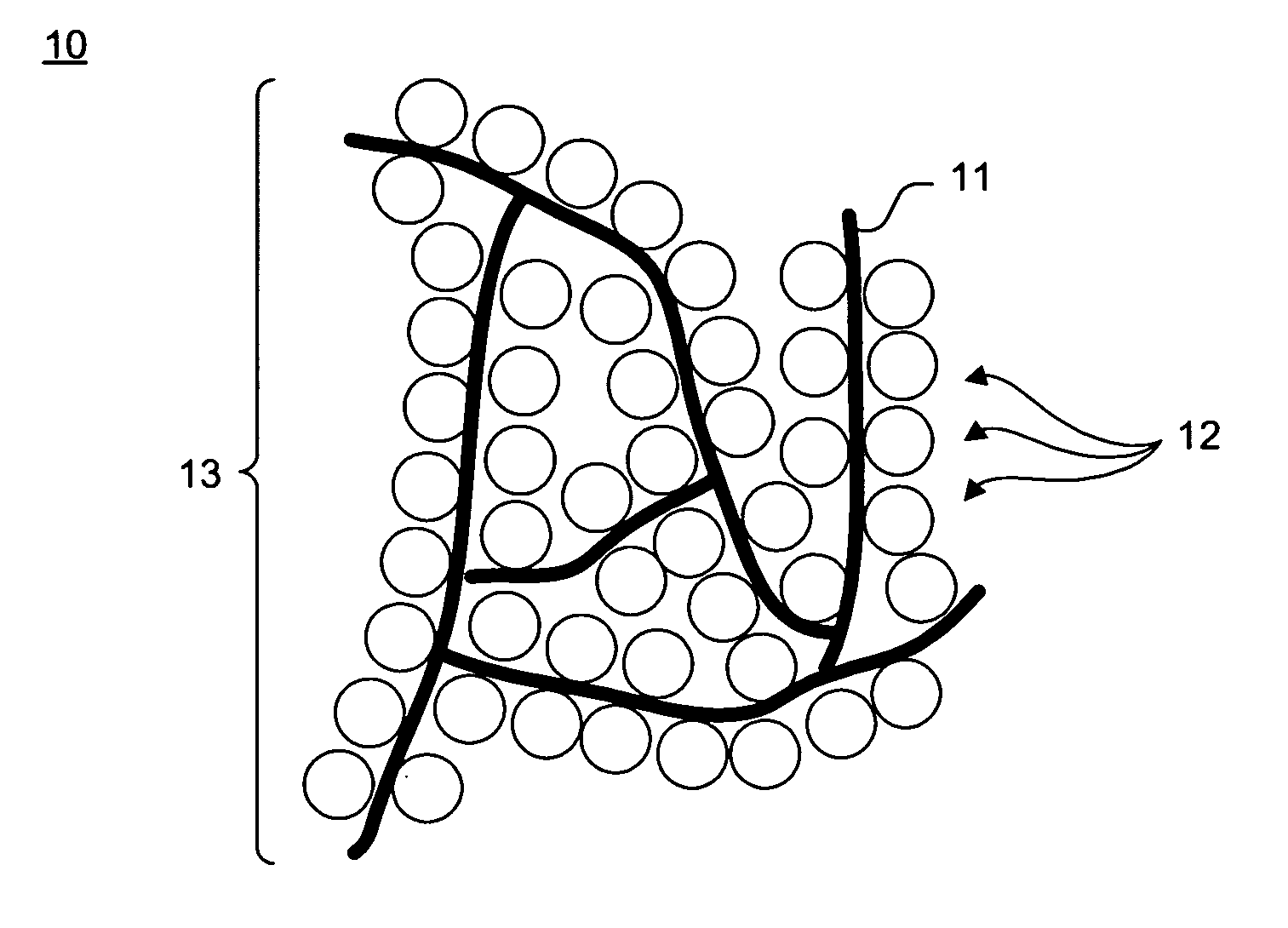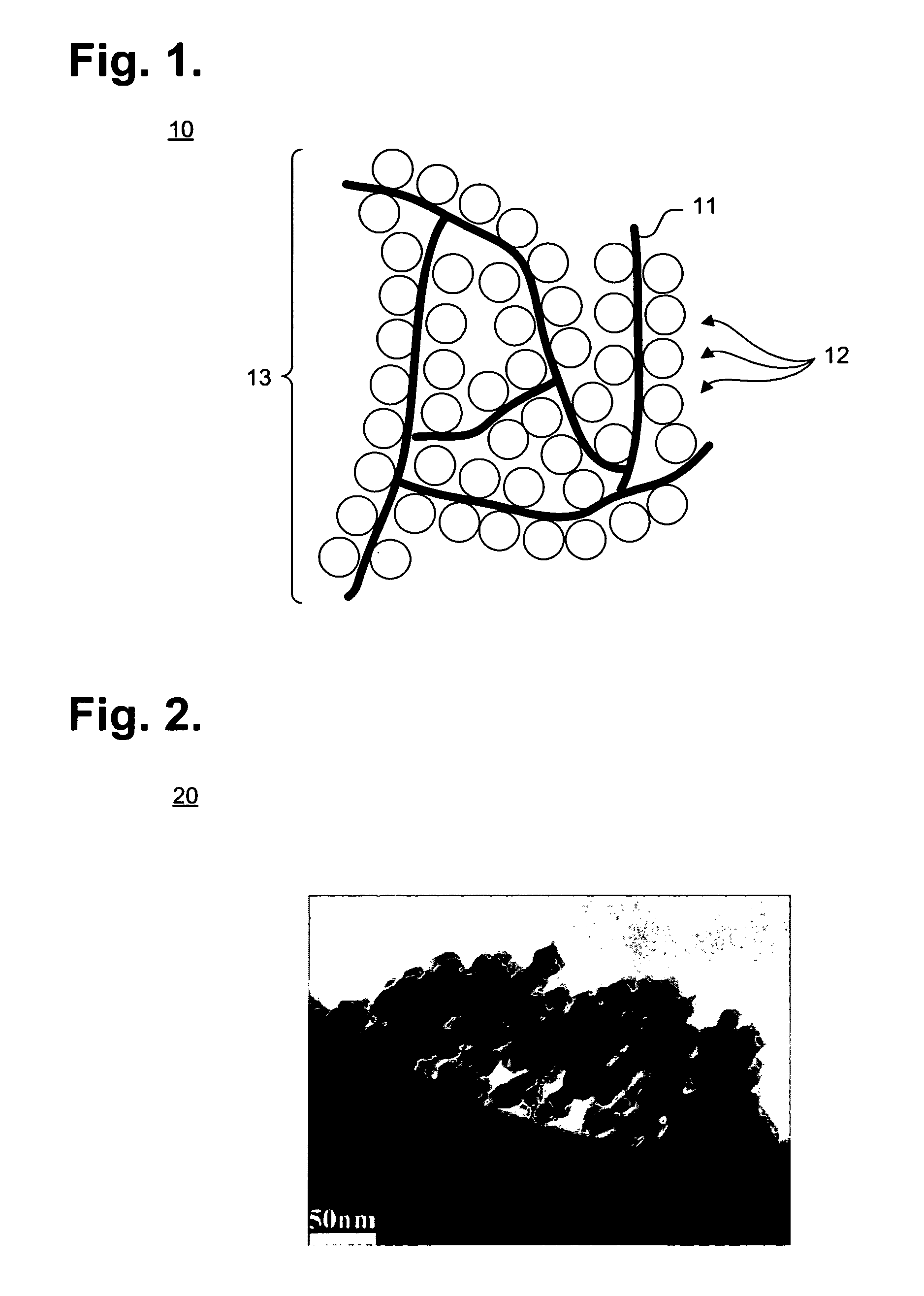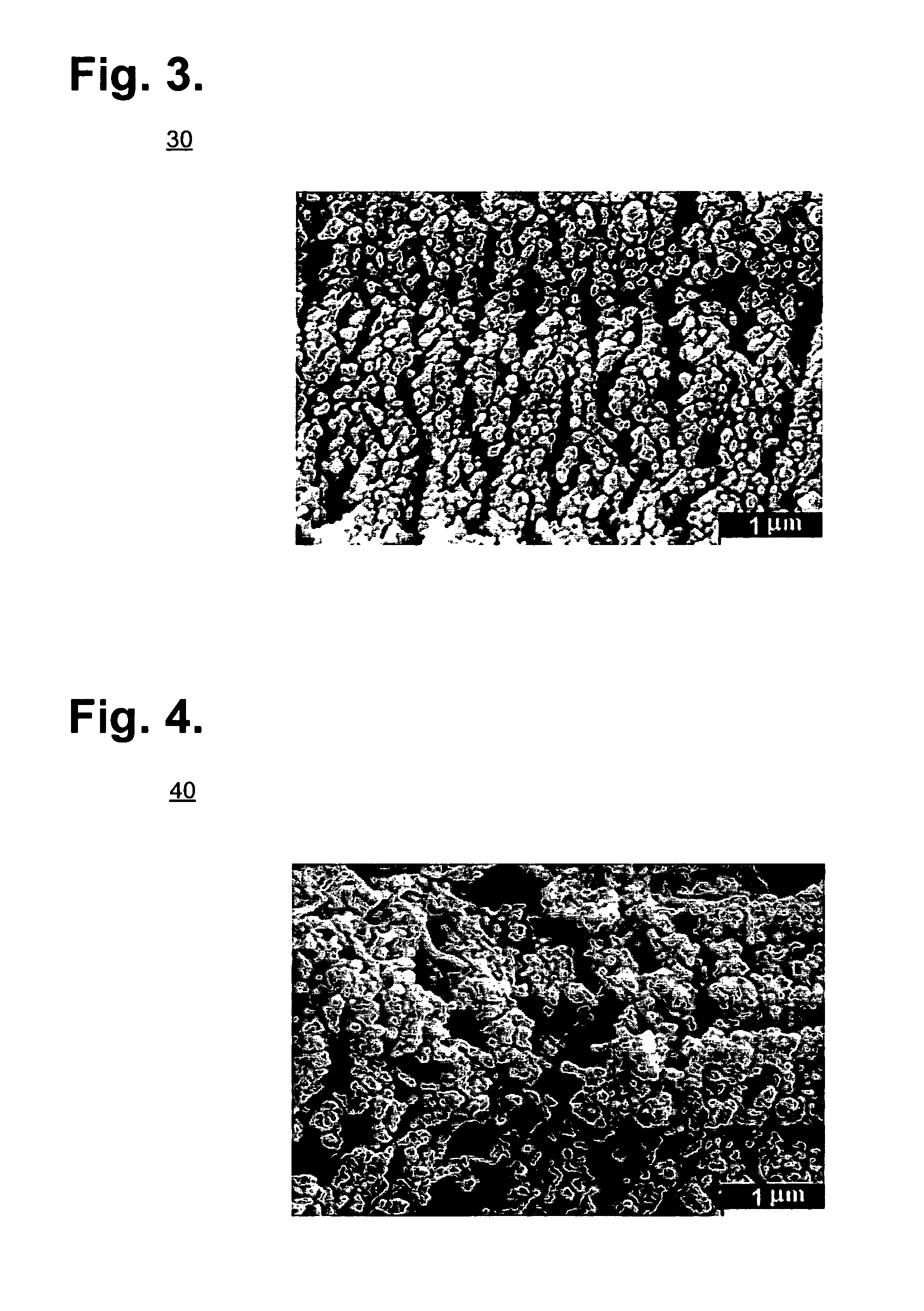Method for preparing a nanostructured composite electrode through electrophoretic deposition and a product prepared thereby
- Summary
- Abstract
- Description
- Claims
- Application Information
AI Technical Summary
Benefits of technology
Problems solved by technology
Method used
Image
Examples
example 1
[0028]Electrophoretic deposition (EPD) is a colloidal process. Raw materials are shaped directly from a stable suspension via motion of charged particles, which are dispersed in a liquid towards an electrode under a direct current electric field. CNTs and nanoparticles coagulate to form deposits on the electrode.
[0029]In one embodiment, charged CNTs and nanoparticles are separated in solution from sediment through upward deposition. Two conductive metal foils, for example, copper foils, are introduced into the stable suspension in parallel orientation with one of the metal foils preferably superposed above the other match foil. The metal foils are connected to a direct current power source and used as EPD electrodes.
[0030]Stable suspensions with varied concentrations of carbon nanotubes can be prepared. To prepare the stable suspension, a predetermined amount of refluxed functionalized CNTs, LiCoO2 nanoparticles, and an electrolyte, such as Mg(NO3)2 or equivalent nitrates, are place...
example 2
[0032]Electrolyte deposition (ELD) also is a colloidal process that forms thin films from solutions of metal salts in electrode reactions. In one embodiment, to prepare an amorphous MnO2 (a-MnO2) composite electrode, functionalized MWNTs are suspended in manganese salt-containing solvent. The presence of functional groups on the walls of the functionalized MWNTs allows Mn2+ ions to be easily absorbed. In a typical experiment, a colloidal suspension of MWNTs in DMF at a concentration of 5 mg / ml is prepared and about 30 mg of Mn(NO3)2.6H2O is added. For electrochemical measurement, a 1M Na2SO4 aqueous solution is used as the electrolyte. The suspension is sonicated for about 30 minutes. The composite electrodes are prepared by directly depositing 0.10 ml of the colloidal suspension on nickel foils and dried at room temperature. After drying, the electrodes are heated to 250° C. in a furnace at a heating rate of 5° C. / min and held at 250° C. for about 30 minutes. During the heating pro...
example 3
[0036]Composite electrodes composed of a-MnO2 for ultracapacitors can also be prepared via combined EPD and ELD. Functionalized MWNTs are negatively charged and can be easily charged with cations when added into a solution of metal salt. In a typical experiment, 4.5 mg of functionalized MWNTs are dispersed in 60 ml of ethanol by ultrasonication and 10 mg of Mn(NO3)2 are added into the suspension as an electrolyte.
[0037]Empirically, the resultant film formed by MWNT deposition on the electrodes exhibits strong adhesion and no binder is necessary. Since the MWNTs in the bottommost deposit layer is in direct electrical contact with the electrode current collector, direct electrical paths from the electrode materials to the current collector are available and contact resistance, as well as internal resistance, is minimal.
Further Embodiments
[0038]In addition to electrode conductors composed of pure MWNTs, in a further embodiment, a mixture of carbon nanotubes and carbon black particles c...
PUM
| Property | Measurement | Unit |
|---|---|---|
| Temperature | aaaaa | aaaaa |
| Temperature | aaaaa | aaaaa |
| Time | aaaaa | aaaaa |
Abstract
Description
Claims
Application Information
 Login to View More
Login to View More - R&D
- Intellectual Property
- Life Sciences
- Materials
- Tech Scout
- Unparalleled Data Quality
- Higher Quality Content
- 60% Fewer Hallucinations
Browse by: Latest US Patents, China's latest patents, Technical Efficacy Thesaurus, Application Domain, Technology Topic, Popular Technical Reports.
© 2025 PatSnap. All rights reserved.Legal|Privacy policy|Modern Slavery Act Transparency Statement|Sitemap|About US| Contact US: help@patsnap.com



